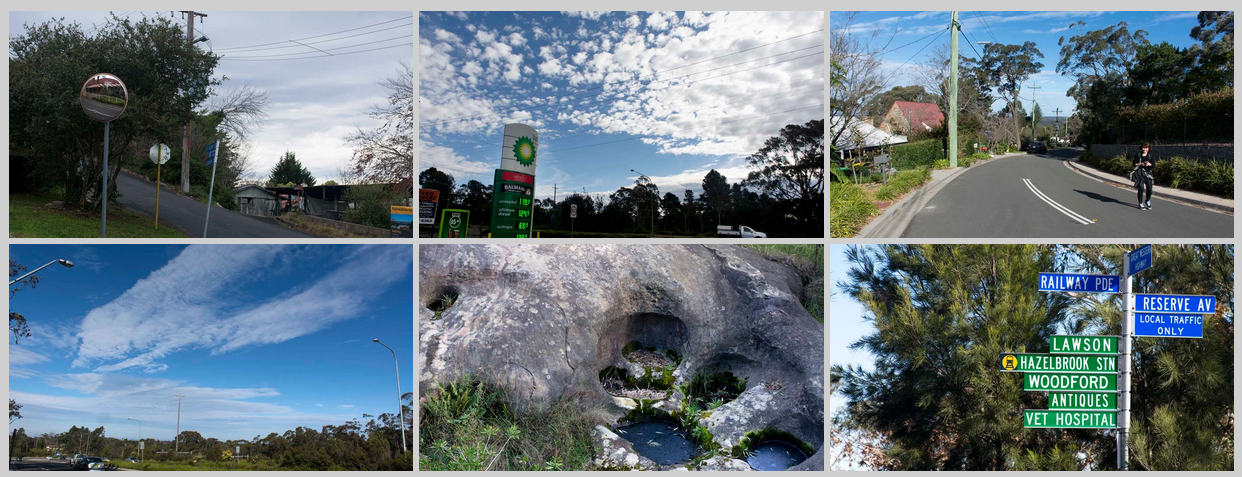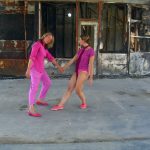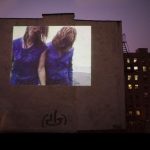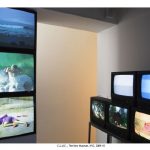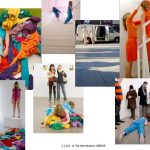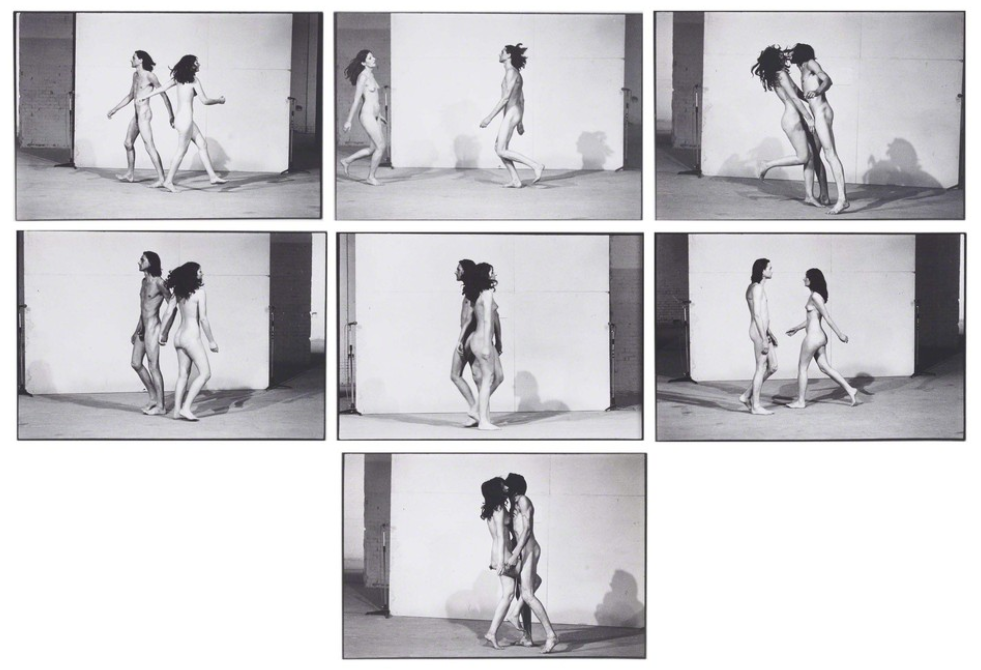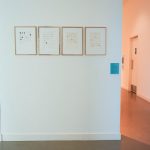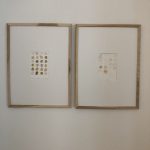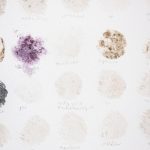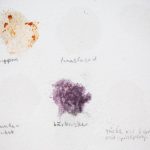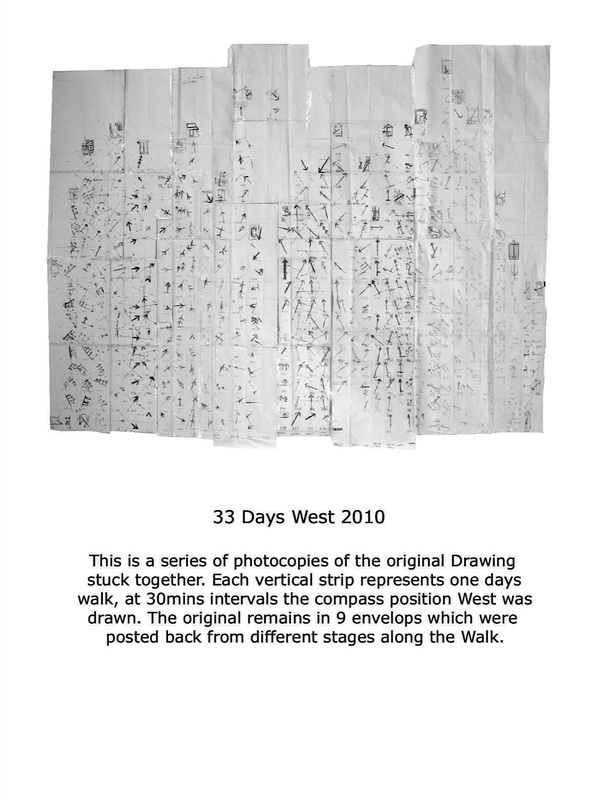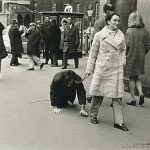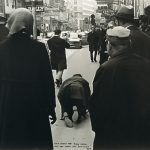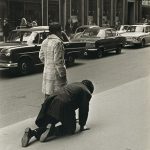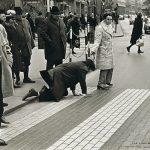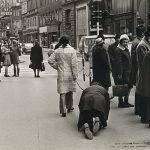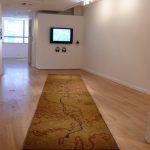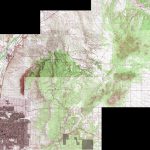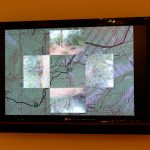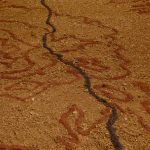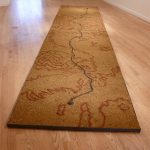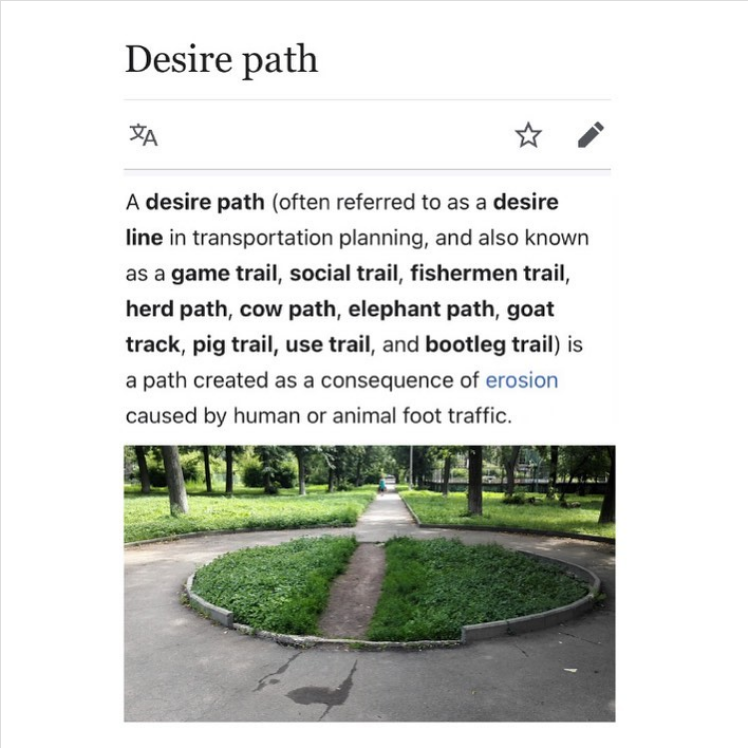“VALIE EXPORT/Peter Weibel, Aus der Mappe der Hundigkeit (From the Portfolio of Doggedness), (1968)
Documentation of the action 5 black-and-white photographs, vintage prints, 40.3 x 50.3 cm / 50 x 40.3 cm each, framed between 2 glass plates, flush 40.3 x 50.3 cm / 50 x 40.3 cm each, fixed with black textile adhesive tape Photographer: Josef Tandl
Five black and white photographs document the action From the Portfolio of Doggedness, which VALIE EXPORT and Peter Weibel carried out in Vienna in February 1968. EXPORT took her fellow artist for a walk—he crawled behind her on all fours on a leash—along the Kärntner Strasse in Vienna, one of the central streets and main shopping areas. This “sociological and behavioral case study” (EXPORT) belongs to the actionistic tradition. “Here the convention of humanizing animals in cartoons is turned around and transferred into reality: Man is animalized—the critique of society as a state of nature” (Weibel). Turning around a piece of normal social behavior makes transparent a particular symbolic order—that of gender specifics—and subjects it to criticism. Here, an active woman leads a passive man on a leash. Crawling, a form of animal behavior, is not, however, a reference to liberation from moral and political discipline or a “better” system. Rather, it points out the necessity of restructuring the social order that has been handed down to us. Photography has a documentary function here, it acts as an “ethno-graphical” study and shows particular communication processes in the observable reactions of the onlookers. The structures of the gazes disclose social behavior and contrast with the action. (Claudia Slanar)” (credit)
